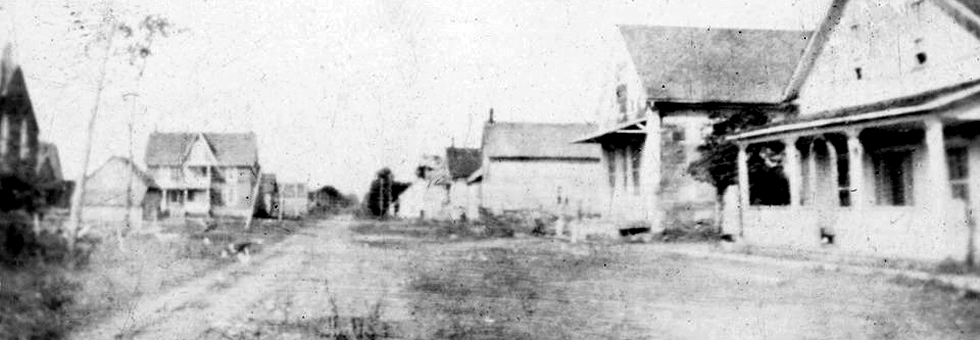Thankfully, Canada Day 2017 has come and gone. Not that I have anything against the birthday celebration, per se. But I prefer a version that has a bit more of a historical foundation, and clearly acknowledges that it’s been “X” years since our nation’s establishment as a Dominion. Instead, we were given a purposely-neutral (but all-inclusive) Canada 150 motif that had rousing, politically-correct verses outlining the 150 things that make our country so awesome (at least in the minds of the underage government hacks who wrote them)… like Poutine Parasol, Celine Dion and the Trailer Park Boys… and a sad “Oh, we done you wrong” chorus.
So, to put a bit more meat on this historical bone, I thought I’d take you back to the cusp of the 19th and 20th centuries and share a tale that I stumbled across in the Tweedsmuir Village Histories (Dunvegan Edition). Agnes Gollan, née MacDonald, penned this account when she and her husband, Reverend Gollan, were residents of Dunvegan. He was minister of Kenyon Presbyterian Church from 1899 to 1911. Mrs. Gollan’s Ode to Canada was an entry in an essay contest, for which she received 2nd prize.
I confess that I am still puzzled by the “Lady of the Snows” reference, given its strong Catholic association with Saint Mary. It was an interesting turn of phrase for the wife of a Presbyterian minister.
Though not a real “Canuck,” I love the “fair Lady of the Snows” as much as any Canadian. When I married in Edinburgh a minister from Manitoba, and sailed from Glasgow, how my friends pitied me, bemoaning my folly! When revisiting Scotland six years later, how I pitied them, and longed to return to Canada.
Canada is par excellence the land of liberty, fraternity and equality, and the characteristics appeal strongly to me. The three-crossed Union Jack has always been a flag of liberty, by which all men as their birthright have been regarded as free and equal.
“The Rose and the Thistle, the Shamrock and Lis (fleur-de-lys”),
All bloom in one garden ‘neath the maple tree.”
These last two lines are lyrics from an 1897 song by Henry Herbert Godfrey. Born in England in 1858, Godfrey left home at an early age to join a vaudeville troupe. However, in 1874, he was reunited with his family, who had immigrated to Montreal. There he worked in a piano factory and served as a church organist.
In late 19th century Canada, there was surge in the demand for sheet music, especially patriotic songs. And it was Godfrey’s skill with this genre that brought him national renown. “The Land of the Maple,” which appeared in both English and French versions, sold over 100,000 copies. It was said to rival Alexander Muir’s “The Maple Leaf Forever” (1867) in popularity. It appears that none of Godfrey’s songs were ever recorded. Pity.
I love Canada for her size. Territory, rivers, mountains, everything is on a grand scale. The views and hearts of the people are large also. There is a wonderfully expansive power in even little log houses on the prairie, where one never feels overcrowded or burdensome, as in many large houses in the Old Country.
My adopted country is in the van (vanguard) of temperance lands and I love her for the stand she takes for everything that makes for righteousness.
Is not the beaver on the Canadian flag the emblem of industry? It is one of the best features of Canada that she offers to young people of character, ability and ambition, better opportunities than any country, while she is, as Lord Strathcona says, “a country worth working for.”
While the entire concept of Canadian values has become increasingly controversial in this age of moral and cultural relativism, this heartfelt declaration of love for her adopted home is a fascinating look in the rear view mirror.
To be frank, I was at a loss as to what Mrs. Gollan meant by “in the van of temperance lands.” However, Rev. Donald N. MacMillian’s small book Historical Sketch of Kenyon Presbyterian Church, Dunvegan was very helpful. It turns out that Rev. Gollan, with the help of his wife Agnes, was very active in the Temperance movement and worked tirelessly to banish the Demon Rum and any other alcoholic beverage. In fact, he was extremely instrumental in driving the only licensed bar out of Dunvegan.
It’s also interesting to note Mrs. Gollan’s reference to a “beaver” on the Canadian flag. Around 1870, Canada adopted the Red Ensign as its flag, with the Union Jack in the upper left hand corner and the coats of arms of the four original provinces of Confederation on one shield… usually with the royal crown on top of the shield, a beaver below and branches of maple on both sides.
As new provinces joined Confederation, their coats arms were added to the shield and, as a result, the flag became more and more complicated. Before long, the maple branches and the beaver failed to make the cut. So the window of existence for Mrs. Gollan’s flag was very narrow indeed… from about 1896 to 1901.
And that’s it for this week. I’ll see you next Wednesday with a regular column.
-30-
